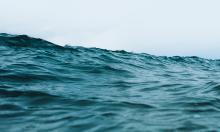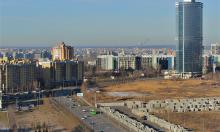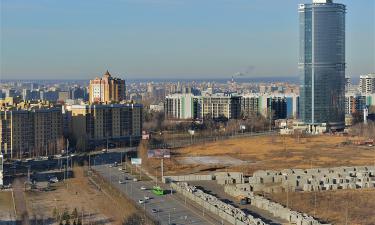Many foodstuffs pose serious health hazard because of dioxin that burnt Yushchenko's face
Experts say that liquor is the only food item checked properly by Russian sanitary authorities. Needless to say, a relatively small amount of liquor can be a serious health hazard if severe quality control is not ensured. Thanks to efforts by Rospotrebsoyuz, the country’s state consumer rights watchdog, the Russian government banned the import of Georgian and Moldovan “alcohol-containing solutions” and two brands of Georgian mineral water. As regards sanitary control over all other food products, it is currently in dire straits.

Grigory Baram, head of department at the Institute of Limnology of the Siberian division of the Russian Academy of Sciences. The scientist claims that foreign food manufacturers (including baby food manufacturers) enjoy an unprecedented level of liberty in Russia when it comes to food imports. “Nobody checks toxins that don’t have an instant impact on the human body. There’re no Russian rules specifying the minimum content of dangerous chemicals in toxins. Therefore, all food products including vegetables, fruit, meat, milk are potential health hazards,” said Baram. The scientist is confident that Russia’s poor health record and a decrease in life expectancy are chiefly caused by a total lack of sanitary control over food imports.
Comparing the Russian approach to food safety control to the American one is quite noteworthy. According to data gathered by Dr. Baram and reprinted by the newspaper, there are about 800 pesticides listed by U.S. sanitary authorities as potential health hazards, while the Russian list has only 450 pesticides. In actuality, the Russian sanitary control agency checks food products for only 4-5 chemicals only. Besides, the authorities officially examine 4-5 antibiotics used in agriculture. The remaining three or four dozen antibiotics, antiseptics and hormonal stimulants are subject to checking only in imported food items.
Only 476 food additives e.g. colorants, stabilizers, preservatives are approved for use in Russia. But there are no regulations specifying maximum allowable content of food additives in food products. Drinking water can be toxic too because sanitary authorities are required to detect only 9 organic substances in it. However, there are sanitary control procedures applying to 720 substances.
Greenpeace promptly fueled the debate when its representatives claimed that high content of dioxins in food poses the biggest threat to the Russian consumer. Dioxins are poisonous, harmful by-products resulting from the manufacture of certain pesticides. If your memory does not serve you right, we would like to remind you that dioxins were allegedly used for badly deforming the face of Ukrainian President Viktor Yushchenko.
The newspaper runs a detailed description of dioxins that are a general name for a family of chemicals calledchlorinated hydrocarbons. Dioxins are believedto actasuniversal anti-cellular poisons capable of causing a number of grave health problems including infertility, various types of cancer, allergy and sclerosis. Concentration of dioxins is measured in nanograms (ng) i.e. in billionths of a gram.
Greenpeace provides frightening evidence with regard to the dioxin content in Russian-made food products. The data gathered by the organization show that the dioxin content found in beef available in the city of Ufa exceeds the maximum allowable dioxin content by 3.6 times.
Other food items having highest dioxin content include beef (39.2ng per kilo) and cream from Irkutsk (45ng per kilo), as well as butter (27ng per kilo) and pork (20.3ng per kilo) from the town of Baikalsk. Here is another piece of information for the sake of comparison: milk with the dioxin content of 1.4ng per kilo is considered unfit for consumption by children.
As mentioned above, dioxins are mostly by-products resulting from the manufacture of pesticides. Chemical plants and garbage incinerators are the other main sources of dioxins.
Greenpeace expert Alexei Kiselyev told a story about some cows grazing on the grass five kilometers away from garbage disposal plants in the Netherlands.
Two years ago the samples of milk produced by the cows were tested in a state-controlled sanitary lab. The milk was found unfit to drink. Consequently, the Dutch government decided to buy out milk from the farmers in that area and destroy it.
The All-Russian association of genetic safety conducts a periodic monitoring of food products on the domestic market. The results of the monitoring show that virtually all brands of milk produced by major milk manufacturers in Moscow are exceedingly high in the content of mitotoxins, pesticides, antibiotics, radio nuclides, GM ingredients, and components of “E” type food additives. A report released by the above association says that the content of yeasts and molds in some food items was found to be exceeding the norm by tens or even hundreds of times.
By and large, the situation looks bleak enough for making arrangements at a funeral home. However, it is not that hopeless as painted, according to some experts who say they only aim to warn the public, they do not want to scare anybody. According to them, Russian-made food is theoretically safer because Russian producers simply have no funds to spend on costly equipment for the manufacture of poisonous chemicals used in agriculture.
Now the question is: How can you be sure that a food item is 100% Russian-made? The labeling says Made in Russia but it hardly means anything since imported equipment, technology and raw materials are heavily used during the manufacture.
Utro
Translated by Guerman Grachev
Pravda.Ru
Discuss this article on Pravda.Ru English Forum
Subscribe to Pravda.Ru Telegram channel, Facebook, RSS!




